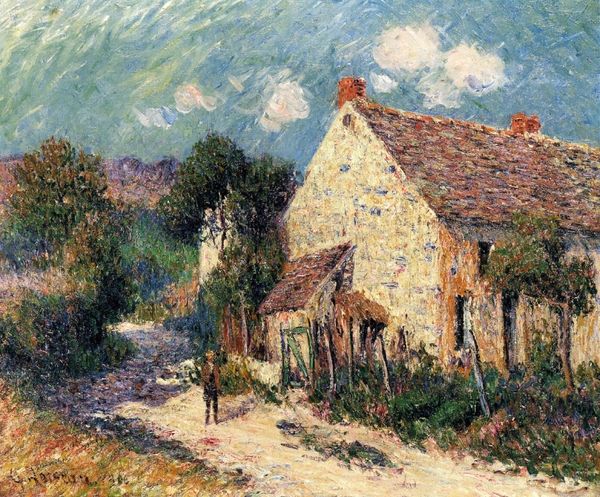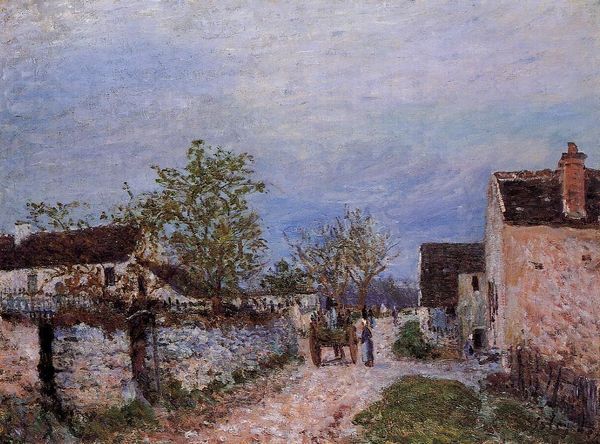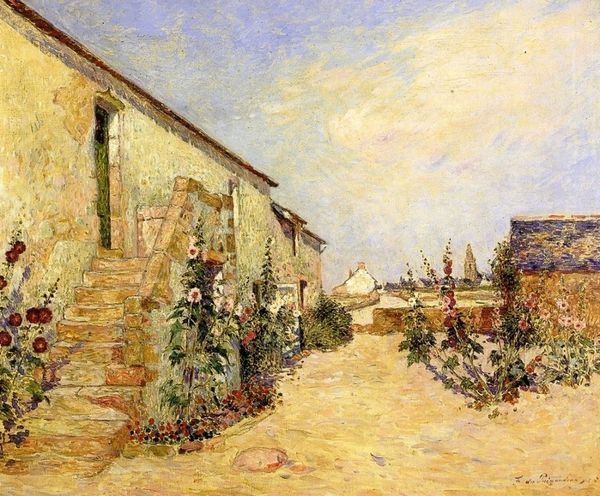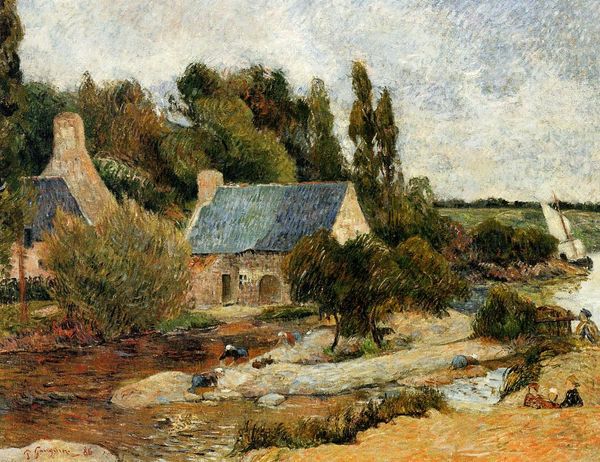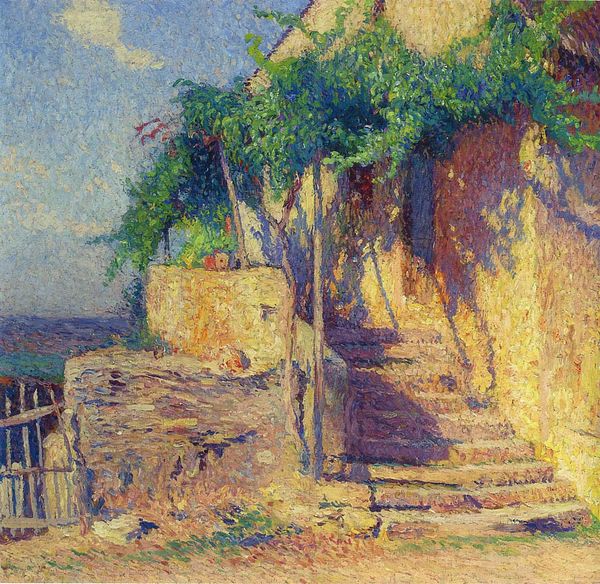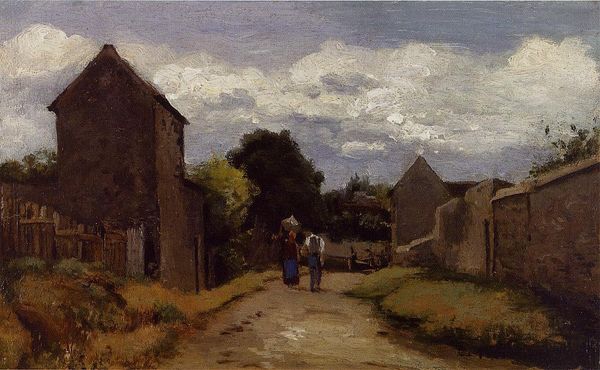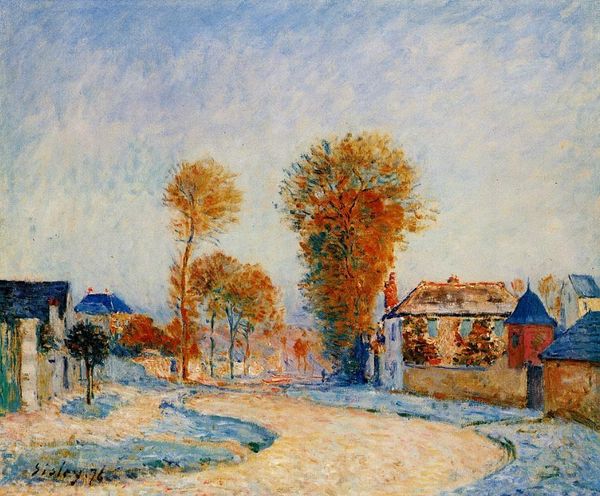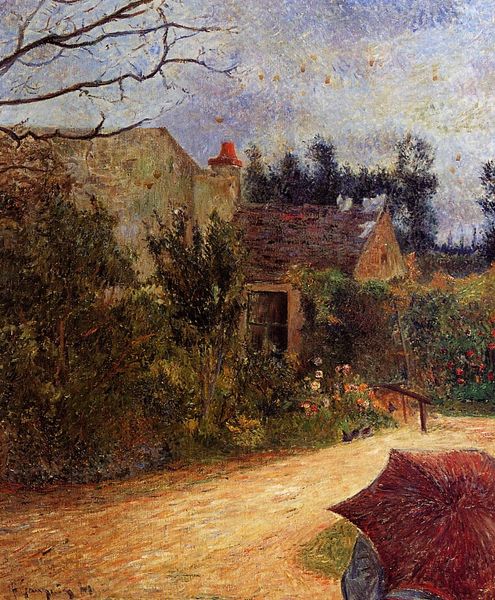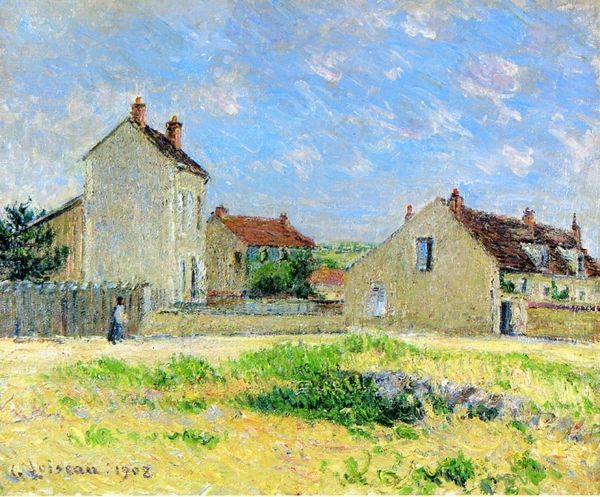
Dimensions: 46 x 55 cm
Copyright: Public domain
Editor: So, this is Gustave Loiseau’s “Village Street, Vaudreuil” from 1903, painted en plein air with oil paint. It strikes me as quite dreamlike. The brushstrokes are so soft and broken. How do you interpret this work? Curator: Its visual strength lies in the application of colour and light. Observe how the light source is diffused, creating a tapestry effect across the surface. The artist uses short, broken strokes not to depict the street realistically, but to evoke a sensory impression of light and atmosphere. Notice the contrast of textures – the rough stone of the buildings versus the softer foliage. Editor: Yes, I see what you mean about the textures. It's not about precision, but about feeling. Does the composition itself tell us anything? Curator: The composition reinforces this. The road leads our eye into the depth of the painting, but the strong verticals of the buildings and trees halt our progress. This creates a tension between movement and stasis, suggesting a fleeting moment captured in time. Consider the semiotic function of these elements – the houses as symbols of domesticity, the road as a symbol of journey. What happens when they’re abstracted to pure form? Editor: That's interesting... so even a seemingly straightforward landscape painting can be decoded for its formal qualities and symbolic structure. I tend to over-interpret the subject, and now I see how the structure has more to say! Curator: Precisely! By focusing on the visual language—brushstrokes, composition, color—we gain a deeper understanding of the artist's intent, regardless of subject matter. Every mark contributes to the overall effect. Editor: Thanks. I think I will come and look at more artworks with this view point and read more formalism critiques. I am thankful for the new perspective! Curator: You're welcome. Keep looking, keep questioning. That's how you truly learn to "see."
Comments
No comments
Be the first to comment and join the conversation on the ultimate creative platform.
